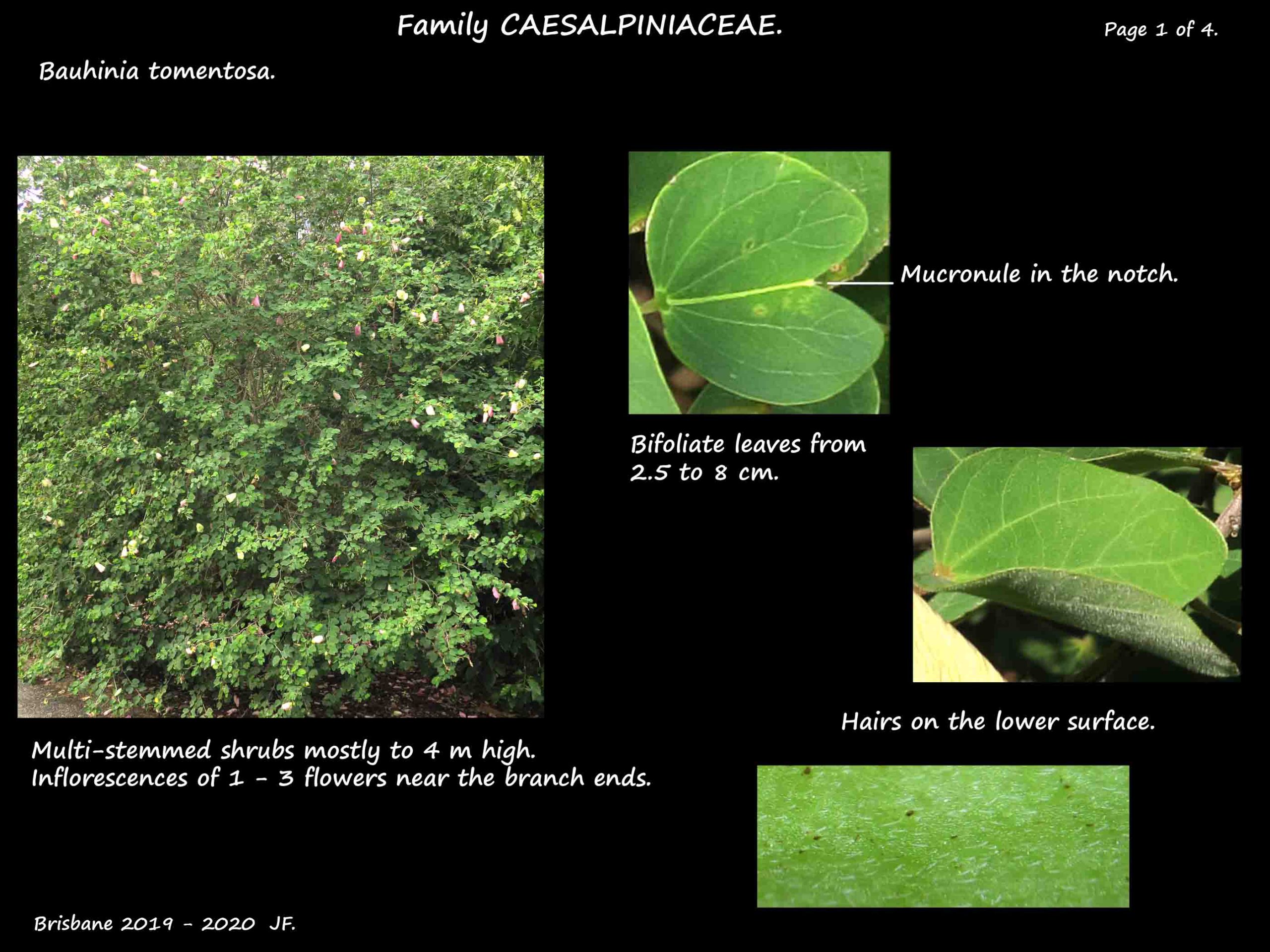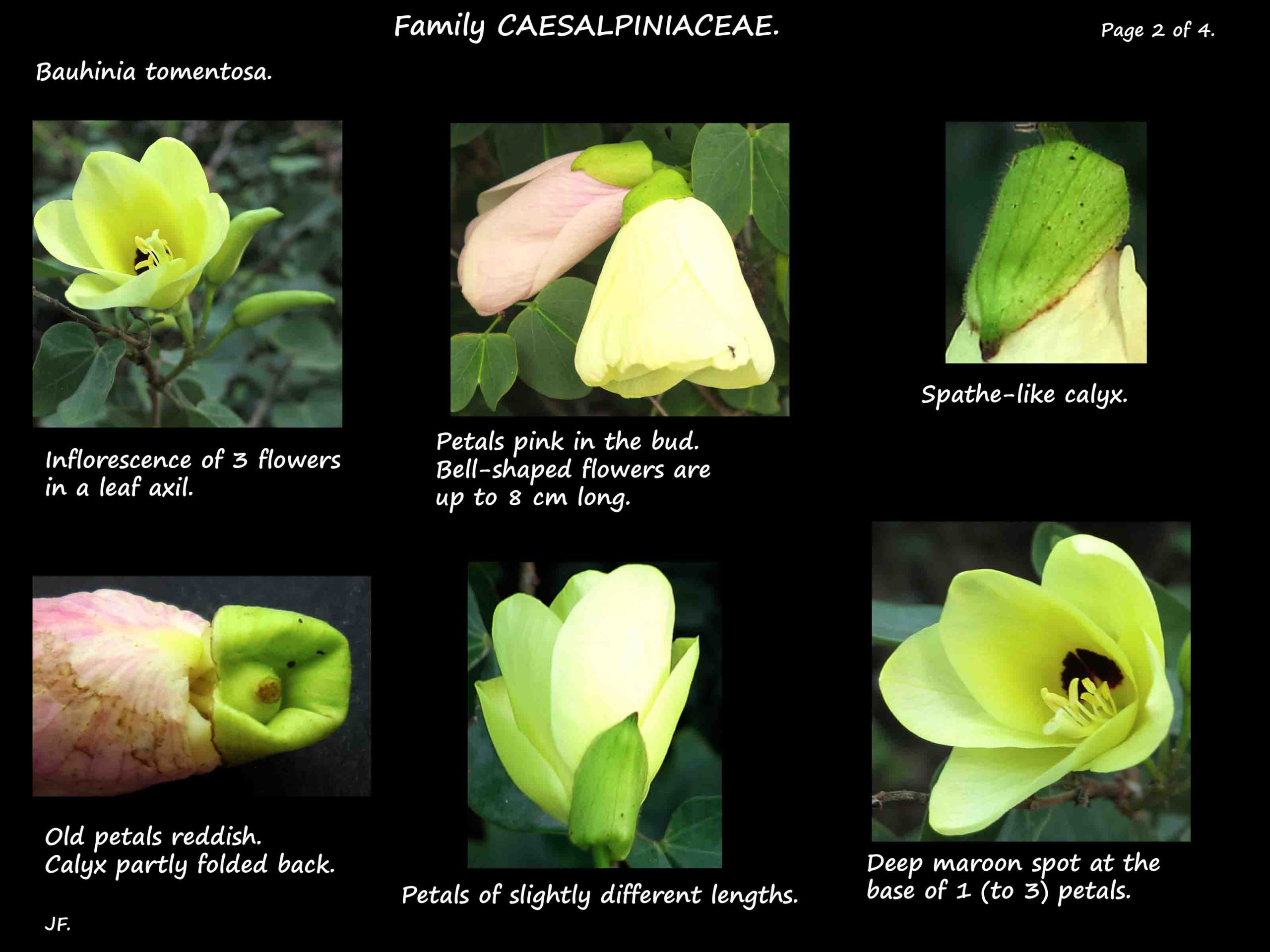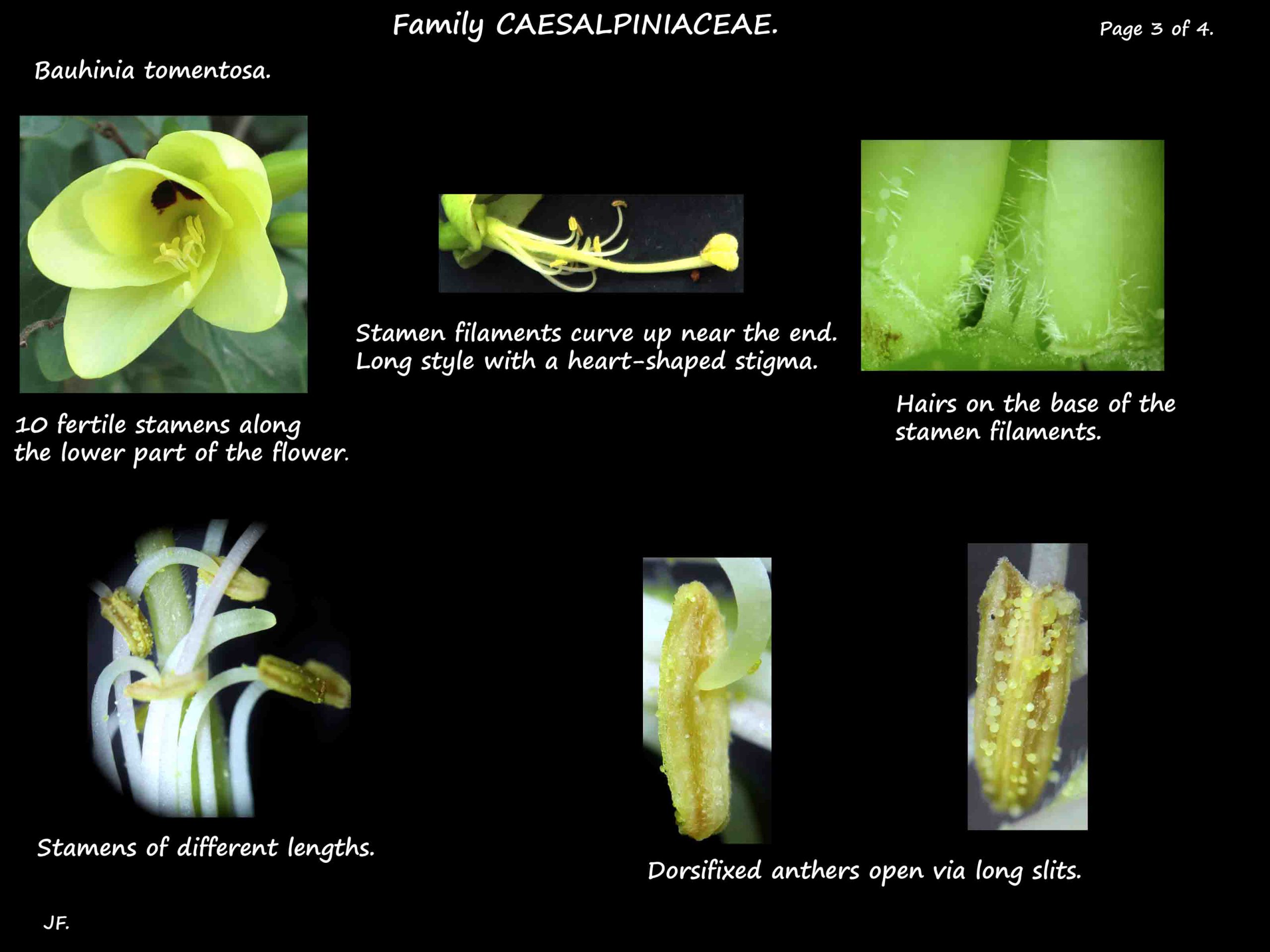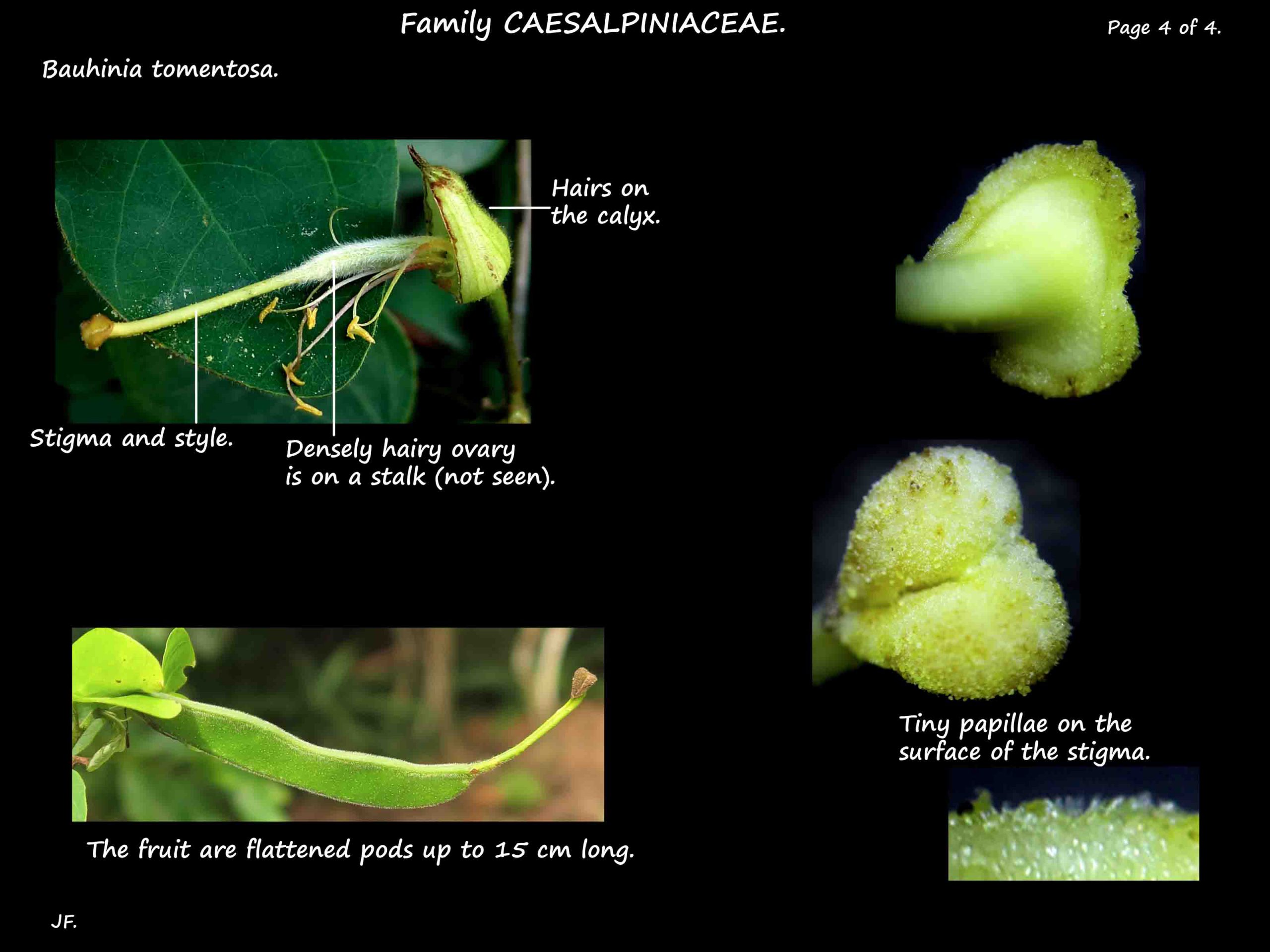Bauhinia tomentosa.
The Yellow Bauhinia, in family Caesalpiniaceae, is from Africa and Asia.
They typically grow as evergreen, multi-stemmed shrubs around 4 m high.
They can also grow as a small tree up to 8 m high.
The long, drooping branches have hairs when young.
The elliptic, bifoliate leaves are alternately arranged.
Commonly around 2.5 cm they can be up to 8 cm.
They are on petioles 1 to 3 cm long with linear stipules around 1 cm long.
The tips of the lobes are rounded and there is a small appendage in the notch.
The upper surface is a pale green and the lower surface has hairs.
Inflorescences are 1 to 3 flowers, on short stalks, in the terminal leaf axils.
There are bracts at the base of the inflorescence stalk and bracteoles under the flower stalks.
The bell-shaped flowers are up to 8 cm long.
The sepal and petal bases form a hypanthium with a nectary tube.
The 5 hairy sepal lobes form a spathe-like calyx.
The 5 overlapping petal lobes are of slightly different lengths.
Petals are yellow or cream with a maroon patch at the base of 1 or more petals.
Petals can be slightly pink in the bud and they become reddish as they age.
There are 10 fertile, curved stamens that lie along the lower part of the flower.
The 1 to 2 cm long filaments have hairs at the base.
The ovary is on a stalk or gynophore that inserts into the hypanthium.
The hairless pale yellow style has a white stigma.
The flattened fruit pods are 10 to 15 cm long.
The young, green and hairy pods become pale brown and woody.
While still on the tree they split to release the up to 12 seeds.
The flattened, ovate seeds, around 7 mm long, are a reddish-brown.
J.F.





